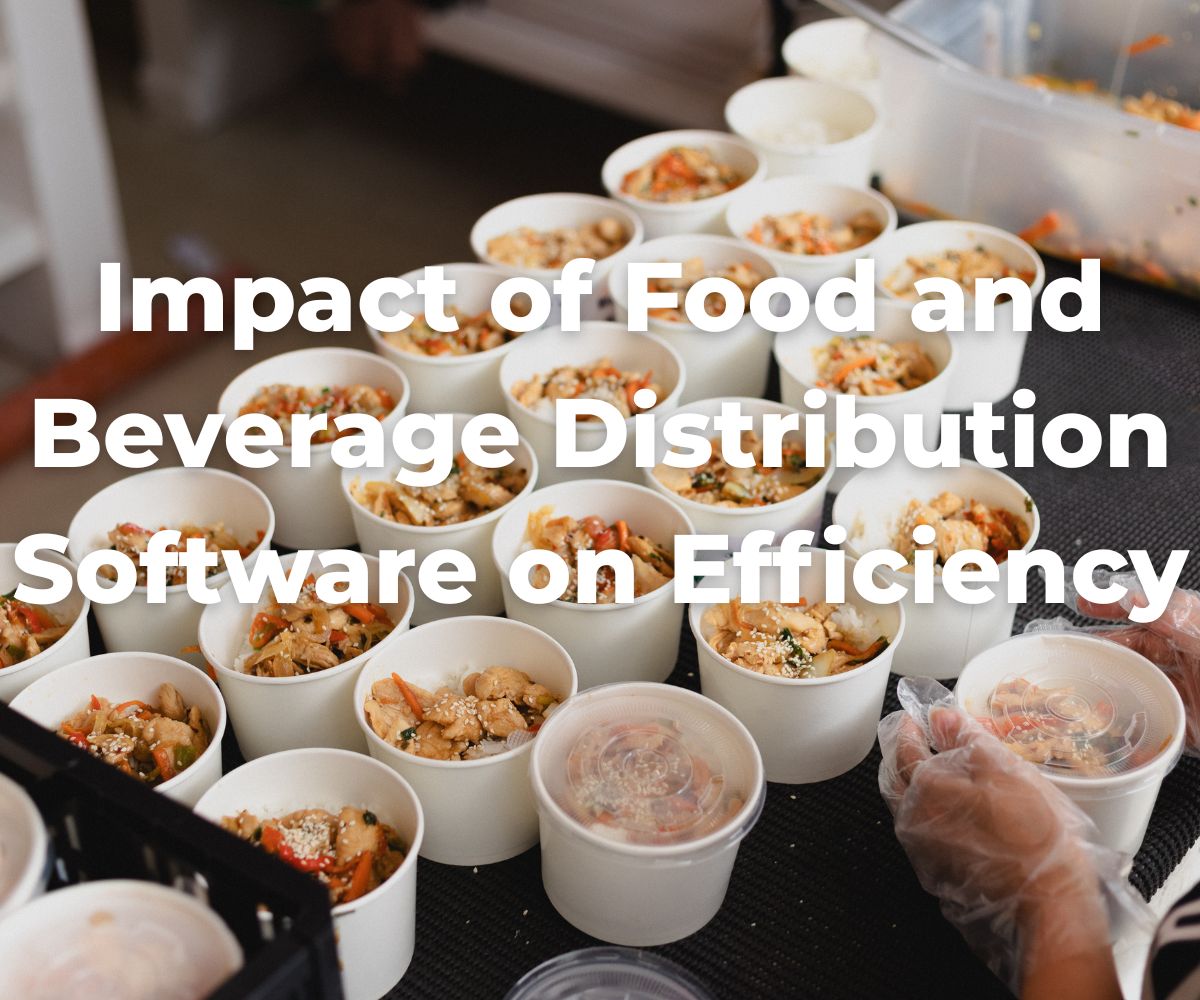top software testing trends
Description
Top 15 Software Testing Trends to Watch in 2024
1. No Code Automatic Test
Greater adoption of no-code testing tools will be the primary software testing trend in 2024.
No-code testing tools are built based on complex artificial intelligence technology and visual modeling, which can quickly form test cases that satisfy automated testing.
These tools allow IT staff to generate simple test case scenarios without coding skills and save time wasted on repeating test cases.
Some key advantages of no-code testing are efficiency, ease of inspection, low learning curve, and saving valuable resources.
In short, all these reasons combine to mean that with no-code test automation,
there is no need to understand automation testing frameworks or the underlying technology of an application to automate testing.
Surprisingly, the road to success in automated testing seems to be within reach.
Automated testing tools like Selenium build on this visual approach, making it accessible to non-developers.
Over time, other features have also been added, such as RC, IDE, and web driver, which have increased their importance and value.
'Selenium IDE' makes the wishes of those who don't want to get addicted to coding a reality.
Selenium currently supports various programming languages, such as Python, Java, Ruby, C#, etc.
It can create, manage, and implement automated tests without needing to learn how to code.
How does codeless automated testing work?
No-code automation test automation is the same as no-code software testing.
The basic principle of no-code automated testing is that tests are created without code.
With so many solutions available now for codeless test automation, there are various ways of working on the front end.
For them, the most common way is to change the illustration in the front section, meaningful process code in the back end, and finally, make it work.
For example, in the case of Testsigma, the test cases are mainly written in a simple language (such as English) using NLP.
These reports are translated into code (in the backend) for implementation.
Here are some of the more popular test automation tools that use no-code testing techniques for test case automation:
TOSCA: Tricentis is a great tool that uses a model-based testing approach.
A model of the program being tested, test data, and suitable test scenarios were prerequisites for earlier test design.
Minor adjustments to the application are also automatically made here.
Test.ai: One of the most often used automated testing tools is automatically testing the user experience of mobile applications.
It requires neither code nor maintenance. It runs on artificial intelligence, which studies the application and then automatically generates test cases,
which are executed to get results related to the user experience.
Ranorex: This tool offers a package of countless solutions and one elegant feature - a simple recorder that can record and playback.
Ghost Inspector: Every positional change in this tool can be created without code. It's an easier way to keep your web pages running correctly.
TestComplete: This specialized tool comes from an intelligent bear, using keyword-driven automated testing with no code.
2. Machine Learning and Artificial Intelligence for Test Automation
Our demand for AI continues to grow, and in North America alone, spending on AI is expected to reach $6-7 billion.
By 2025, global investment in artificial intelligence will roughly reach $200 billion.
In 2020, nearly 64.8% of companies invested more than $50 million in artificial intelligence and significant data initiatives, up from 39.7% in 2018. ——Forbes
In 2020, 37.8% of industry leaders created data-driven companies using artificial intelligence and big data. - "Statista"
From 2018 to 2023, computing resources for artificial intelligence will increase fivefold, making artificial intelligence the backbone of infrastructure evaluation and decision-making. – Gartner Consulting
The following are the most popular AI-based automated testing tools:
Appvance: This tool uses AI to generate test cases based on user behavior.
The test suite systematically covers the behavior of actual users on the production system, which makes the tool 100% customer-centric.
Testim.io: This tool leverages machine learning to automate the writing, execution, and continuous testing of tests.
It strongly emphasizes functional, thorough, and user interface testing.
Test.ai is the most popular mobile test automation tool that utilizes artificial intelligence to perform regression testing.
This tool is excellent for getting your application performance metrics and is a better monitoring tool than a functional testing tool.
Function: This tool leverages machine learning for functional testing and is similar to other testing tools on the market in terms of performance,
such as running tests quickly (no scripting required), running multiple tests in minutes, and performing deep analysis.
TestCraft: This AI-based automated testing platform is designed for continuous and regression testing and runs on Selenium.
TestCraft is also used to control web applications. The role of AI technology is to cut costs and maintain time by automatically overcoming application modifications.
Applitools: This is the most popular application for visual management and AI-driven visual user interface control and testing software.
Based on artificial visual intelligence, it provides a comprehensive software testing platform that can be used by
digital transformation, test automation, software engineering, DevOps, and manual QA teams.
Sauce Labs: This is also one of the best cloud-based automated testing tools that utilize artificial intelligence and machine learning techniques.
This excellent tool supports a comprehensive range of operating systems and browsers, mobile simulators and emulators, and mobile devices at the speed users demand.
Test their applications.
3. Test Automation in Agile Teams
Agile testing and agile development are rapidly gaining popularity, and intelligent quality assurance or testing teams are keeping pace with the current and growing software trends.
Agile testing tools differ from project management and test automation tools, and any agile project without test automation is a staged waterfall project.
Automated testing is a crucial activity of agile methodologies and a significant driver for facilitating QA procedures.
According to a report by MarketsAndMarkets.com,
"the global automated testing market is expected to grow from $12.6 billion in 2019 to $28.8 billion in 2024, at a CAGR of 18.0% during this period"
4. Increased Demand for considerable data Testing
Enterprises across industries will continue to deal with huge data volumes and different data patterns.
Any amount of unstructured or structured data mining (often defined as big data) requires end-to-end testing.
Considerable data testing can help us make better decisions with correct data validation and
improve business strategy and market positioning with the best decisions from extensive data analysis.
According to MarketsAndMarkets, the global value of the big data market has been estimated due to the increase in the use of IoT
in enterprises and higher government initiatives to promote the adoption of digital technologies.
The high dependence on data in each vertical requires us to have a practical big data test to ensure the
Consistency, accuracy, reliability, and quality of the data are also necessary for all enterprises to make informed decisions.
In particular, considerable data testing facilitates data-driven decisions on some services and products,
which are captured and scrutinized to provide essential business insights.
5. IoT Testing Promotes Digitally Connected Smart Devices
As of 2020, the number of connected devices has reached 20 billion, compared with 6.4 billion in 2016.
These figures demonstrate the massive expansion of data and the need for effective IoT testing strategies today.
Such IoT testing includes testing communication protocols, operating systems, and hardware and software of IoT devices.
The hardware of IoT products can be at risk and vulnerable to multiple threats that need to be tested effectively,
and the software is also built into IoT devices. It is vital to evaluate all IoT devices and security information to prevent vulnerabilities and dangers.
Most companies have identified the need for an effective IoT testing strategy to meet end-user demands for well-connected and efficient intelligent devices.
In 2019, the IoT testing market was valued at $781.96 billion and was expected to reach $3,624.23 billion in 2025, with a forecast CAGR of 32.24% from 2020 to 2025.
IoT testing utilizes advanced and cutting-edge technologies, increasing the frequency of testing tools used for different purposes.
The market is predicted to have considerable growth throughout the anticipated term.
6. Increased Usage of Agile and DevOps
Many companies have adopted DevOps to respond to the need for accuracy and speed and Agile to respond to rapidly changing needs.
DevOps includes practices, procedures, tools, and rules that help integrate operations and development activities to minimize the time from development to operations.
DevOps is a widely accepted solution for enterprises looking to shorten the SDLC (software development life cycle) - from development to operation and delivery.
The increasing use of DevOps and Agile can assist QA professionals in rapidly developing and shipping high-quality software, known as "speed quality."
Over the past five years, using these two technologies has helped organizations boost their benefits, which trend will continue in the upcoming years.
7. Steering Performance Engineering
Maintaining higher performance is very important when developing software in the early stages.
You must deal with several elements, such as business value, utilization, easy configuration, and security.
The user experience and market size it captures can be seen across various downloadable app platforms.
In the short development cycle, with frequent releases and changing market demands, user experience is one of the critical roles.
In response to this trend, software developers are beginning to adopt a customer-centric approach that prioritizes each SDLC phase
to decrease performance glitches and bottlenecks early in the product life cycle.
As a result, the goal of performance testing has shifted to examining the system's poor performance and understanding its root causes in the software development process.
Therefore, performance engineering was developed as an alternative to performance testing,
enabling the construction of essential performance metrics from the beginning of the design.
There are several key differences between performance engineering and performance testing:
First, performance testing evaluates the application's quality responsiveness and load handling.
It determines how well the system can tolerate production load and predicts possible glitches under high load conditions.
However, performance engineering considers performance metrics such as turnaround time, quality, productivity, etc., in the initial design of an application, thereby helping to identify issues early in the development process.
Second, performance testing is a quality control procedure customarily carried out following the conclusion of the software development cycle.
The difference is that performance engineering is a never-ending process, starting from product design to product development,
to end-customer experience, which will be rooted in any stage of the software development cycle.
The software testing team also does performance testing, while performance engineering includes the quality assurance group and RND.
8. Blockchain Testing
Blockchain technology is integral to the cryptocurrency, automotive, and finance industries.
It differentiates the decentralized network from the centralized systems that traditional banks use to manage banking and financial operations.
There is no doubting the changes brought about by blockchain technology. The way businesses deal with digital currencies such as Bitcoin.
The application of blockchain is not limited to the financial field; from government services to sheer energy,
their intelligent contracts are applied to various business fields.
However, the wide range of blockchain applications brings some challenges to debugging blockchains.
Blockchain Testing is an efficient, specialized, next-generation testing solution that can be used to debug code to deliver efficient blockchain applications.
According to Marketsandmarkets, the international blockchain market size is expected to grow from 3 billion in 2020 to 39.7 billion in 2025.
It is expected that by 2022, the convergence of blockchain technology and IoT devices through intelligent contracts will allow two parties to conduct microtransactions,
an upcoming trend. In addition, the ASX plans to adopt a new blockchain-centric system to manage Australian financial markets by the end of 2020.
In addition, a recent report by PricewaterhouseCoopers (PWC) revealed that by 2020,
77% of financial institutions are likely to incorporate blockchain technology into their production processes or systems.
These statistics show that the scope of blockchain technology is expanding, and the demand for blockchain testing is also rising.
Blockchain tests: core test types; some key test types must be run, including performance, functional, node tests, API, and other specialized tests.
· Performance testing: Performance testing identifies performance bottlenecks, proposes techniques for fine-tuning the system,
and re-evaluates whether the application is ready for the market.
Functional testing: Functional testing is an overall program that evaluates the work of multiple functional parts of the blockchain (e.g., smart contracts).
· Node testing: Each heterogeneous node on the network must be independently and thoroughly tested to ensure smooth cooperation at one time.
· Application Programming Interface Testing: API testing solves the interface problem between applications in the blockchain field.
It checks to ensure that application programming interface responses and requests are prepared and processed correctly.
Some of the most popular blockchain testing tools:
EthereumTester: This is a GitHub repo-like tool and one of the most used platforms and open-source testing libraries.
The installation of Ethereum Tester is straightforward and requires only one manageable application programming interface to support various testing needs.
It works equally well for Web3 integrations, APIs, intelligent contracts, backends, and other blockchain tests.
Ganache: It was named TestRPC tool earlier and is designed to test Ethereum contracts locally.
It generates a mock blockchain that allows anyone to test with multiple accounts.
Populus: This framework is developed around the py.
Test framework, which has Ethereum testing capabilities in the form of a set of features that test contract deployment.
BitcoinJ: This is also a well-known tool, a Java-based framework built for
Bitcoin-based applications that allows you to interact with the existing Bitcoin network and various testing activities.
Embark: Embark is a testing framework focusing on developing dApps (decentralized applications) that run on multiple nodes or systems.
This fantastic framework integrates IPFS, Ethereum blockchain, and decentralized communication platforms like Orbit and Whisper.
Truffle: This is a great tool that Ethereum developers love. It brings the best testing features like automatic contract testing.
It can do a lot more than functional testing within a blockchain application.
Exonum Testkit: Running the entire test service is the strength of the Exonum Testkit.
It enables anyone to test application programming interfaces and transaction execution in an organized system, that is, without linking consensus algorithms to network operations.
9. Cybersecurity and Risk Compliance
In 2020, network security testing became a significant trend in quality assurance and software testing.
The report summarizes some key goals that explain how it can be incorporated as a separate topic:
- Raise awareness of the importance of security across all industries.
- Increase product and software security.
- Implement it ahead of the software development life cycle Security check.
According to BitSight's "Security Performance Management Leads to Better Security and Business Outcomes" study, more than 82% of stakeholders have recognized that making users feel secure is a standard that is increasingly important in corporate decision-making.
According to cybersecurity venture capital firm Cybersecurity Ventures data, cybercrime-related losses are expected to reach $6 trillion a year by 2021.
Security practices will play an even more significant role in 2021 for the following reasons:
Regular pen testing helps build trust between businesses, customers, third parties, and partners.
·Security Testing gives you a complete picture of your organization's weaknesses before a hacker/attacker moves and helps you detect areas vulnerable to security or cyber threats.
· In any downtime, network security testing ensures that it will not leave you unprepared for costly and costly losses.
· Cybersecurity testing protects not only transactions (whether money or data) but also the security of end users. Cybersecurity testing will remain a hot topic next year as cyber risks can arise in any form at any time.
The key reasons are as follows:
· Network security testing can provide insight into a business's weaknesses before hackers attack.
Penetration testing is cost-effective: Data breaches have exacerbated an already vulnerable position for businesses in mid-2020 amid the pandemic.
· Security testing helps uncover components vulnerable to cyber theft and attack.
· Regular penetration testing helps companies gain a good reputation and helps them gain enormous trust from their third parties, partners, and customer partners.
· In an outage, cybersecurity testing ensures that the cost and disruption won't catch you off guard.
10. Significance of QAOps
QAOps is a better practice that combines QA, operations, and developers.
Test operations, CI/CD pipelines, and QA engineers working in parallel with development teams are two key holders of QAOps.
To achieve the goals of high quality and rapid delivery, all testing and QA activities must be performed in the CI/CD pipeline.
A better way to integrate quality assurance in operations and development is to have developers write test cases.
At the same time, product designers and operations engineers work with test teams to identify UX/UI anomalies.
By implementing this, developers and QA teams can collaborate and better understand the quality assurance process.
Such teamwork will help make the testing and development process more efficient.
In short, QAOps is a rising trend that automates the process between IT,
software development, and quality assurance, enabling it to deliver software quickly and with high quality.
Therefore, more and more organizations are beginning to gravitate towards DevOps, enabling QOps to continue developing in 2024.
11. A Combination of Manual and Automated Testing
Thoroughly automating manual testing efforts demonstrates the decision-making power of a skilled QA team.
Combining these two efforts can increase productivity, save time, and improve quality, problems that automated testing can't handle.
Currently, the requirements for both the level of automation and automated QA engineers are increasing.
With the development of automation, the speed and efficiency of software testing have significantly increased,
but it cannot cover all aspects, such as design, user experience, and usability. The future of QA testing is the balance between automated and manual testing in software development.
Why merge manual and automated testing?
The faster a QA team can detect bugs, the less time it takes to correct them, so spending money on testing resources is more valuable than on bugs post-release.
And throughout the testing process, every technique, branch, situation, route, and choice was well tested so that failures were found immediately.
If the vulnerability is discovered in the first place, the cost of fixing it can be minimized.
At a certain stage of test coverage, code scope is managed; it also reviews the available quality of each application, minimizing gaps between requirements and test cases.
Since the application's specification usually determines the contribution of manual and automated tests, both methods should be used randomly to maximize code coverage.
Automated testing has the advantages of Consistency and speed; however, it is not on the user's side.
And that's where manual testing comes in, so it starts testing from places that test automation can't reach.
Both techniques can be used to mask different parts of the same feature or to mask completely different features.
However, automated tests can only work according to the scripts written, and a QA engineer can only do manual tests.
Combining these tests can achieve a harmonious balance between usability, functionality, speed, bug minimization, and an optimal user experience.
12. API and Service Test Automation
At least one-third of businesses will adopt several experience creation platforms by 2024 that support online, chat, and mobile and permit real-world development, predicts Gartner.
"For the previous ten years, APIs have not only driven the new digital economy but have also sparked an innovation race,
forcing some businesses to rethink how they develop and launch new applications."
With the enhancement of microservices architectures and software development online applications, The usage of programming interfaces (APIs) is increasing daily.
Almost every component uses the API. Even client-server development is at its peak,
and the QA team must confirm that the communication between these APIs is flawless and can function individually.
To keep this process highly effective, we will ramp up automated testing of APIs and service levels in 2024.
13. Quality Inspection Center
Many enterprises face enormous challenges as they attempt to manage application quality
while responding to additional business demands by calculating inconsistent test procedures across locations, geographies, and test groups,
not executing test and QA functions, resources, infrastructure, and suboptimal consumption of tools.
To meet the challenge, some large companies are looking for quality model centers and hiring dedicated teams
to standardize deliverable implementation models to ensure the quality of critical business systems and processes.
A quality inspection center is a model of a centralized testing platform that provides standardized testing procedures and optimal utilization of resources for quality and testing reasons.
The testing team at the Quality Testing Center is committed to establishing a reusable testing framework and standards for companies to follow during development.
In the long run, this helps build high-quality software and strengthens the overall workflow of the software development process.
Running these centers will also reduce testing time without sacrificing product performance, usability, and functionality quality.
It also provides efficient automated testing and develops flexible standards in QA practice to execute in future projects.
14. Infrastructure and Code (IRC)
Many businesses (mostly IT companies) heavily use cloud-based solutions for cost-effectiveness, scalability, and flexibility.
The increasing use of cloud and virtualization technologies has changed how servers are used.
It simplifies the bottleneck problem of allocating and configuring servers in the past.
Advanced infrastructure management techniques modernize the architecture management process.
Various tools, like Terraform, Kubernetes, Docker, etc., will continue to be mainstream in 2024.
As the name suggests, infrastructure as code is primarily a concept for similarly managing an operating environment.
You would come to do application or other code in a standard release state. While it is possible to manually modify the configuration or use one-time scripts to change the infrastructure,
the operational infrastructure is governed by similar structures and rules developed by the primary control code, while new server instances appear.
This means that core DevOps best practices (such as virtual testing, continuous monitoring, and version control)
is applied to the underlying code that governs infrastructure design and management.
In short, infrastructure is treated exactly like any other code.
The purpose of using an advanced coding system such as Puppet or Ansible is to make the infrastructure
as a coding environment accessible to anyone with a basic knowledge of modern coding structures and techniques.
Four best practices for infrastructure and code:
· Test infrastructure in integration tests, functional tests, and unit tests.
· Manage infrastructure through source control for a thorough audit trail of changes.
· Allow consolidation around infrastructure configuration and arrangements, especially between development and operations.
· Avoid written documentation, as the code records the machine's state. This is a therapeutic practice because, for the first time, the documentation about the infrastructure is always up-to-date.
Infrastructure as code is a framework that takes proven coding methods and practices and extends them directly into infrastructure,
effectively blurring the lines between applications and settings.
In a nutshell, this is similar to what DevOps has done for those in charge of both areas by merging operations and developers into a single unit with a hybrid name.
Benefits of infrastructure and code:
· Consistency
Manual procedures lead to errors and cycles. Humans are not always perfect. Communication is complex, and we are generally not good at communicating with people.
No matter how hard we try, sometimes manual infrastructure management makes the difference.
However, the infrastructure code solves this problem by making the configuration file itself the only source of truth. This way, we can guarantee that similar configurations will be scheduled repeatedly without differences.
Speed
Speed is the primary advantage of infrastructure and code. It lets you quickly set up an entire infrastructure by running a single script.
This is quickly done for every environment, from development to production, through stages, quality assurance, and more, all the way beyond.
Infrastructure and code enable the entire software development lifecycle to run efficiently.
· Responsible
This method is simple and quick. Since you can version your infrastructure into a code configuration file similar to any source code file,
you can fully track what each configuration modifies. There is no need to engage in the "what if game."
Low cost
Undoubtedly, the main benefit of infrastructure and code usage is reduced infrastructure management costs.
Using the cloud, infrastructure, and code may dramatically save costs.
Effectiveness of the entire software development cycle
You can set up infrastructure in several stages using infrastructure and code.
This makes the entire software development life cycle more efficient, taking the team's efficiency to new heights.
15. Chatbot Testing
Chatbots have gained popularity in the healthcare industry d






















